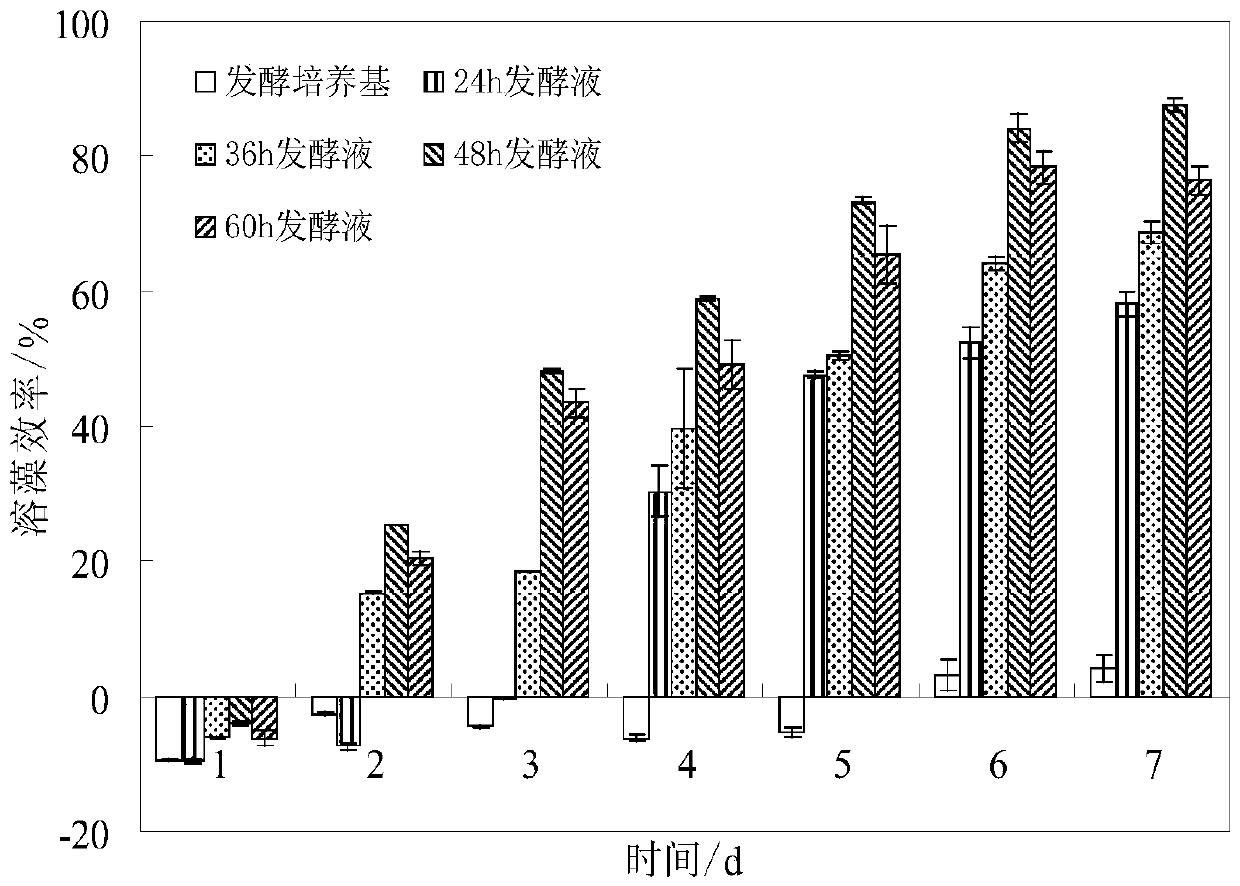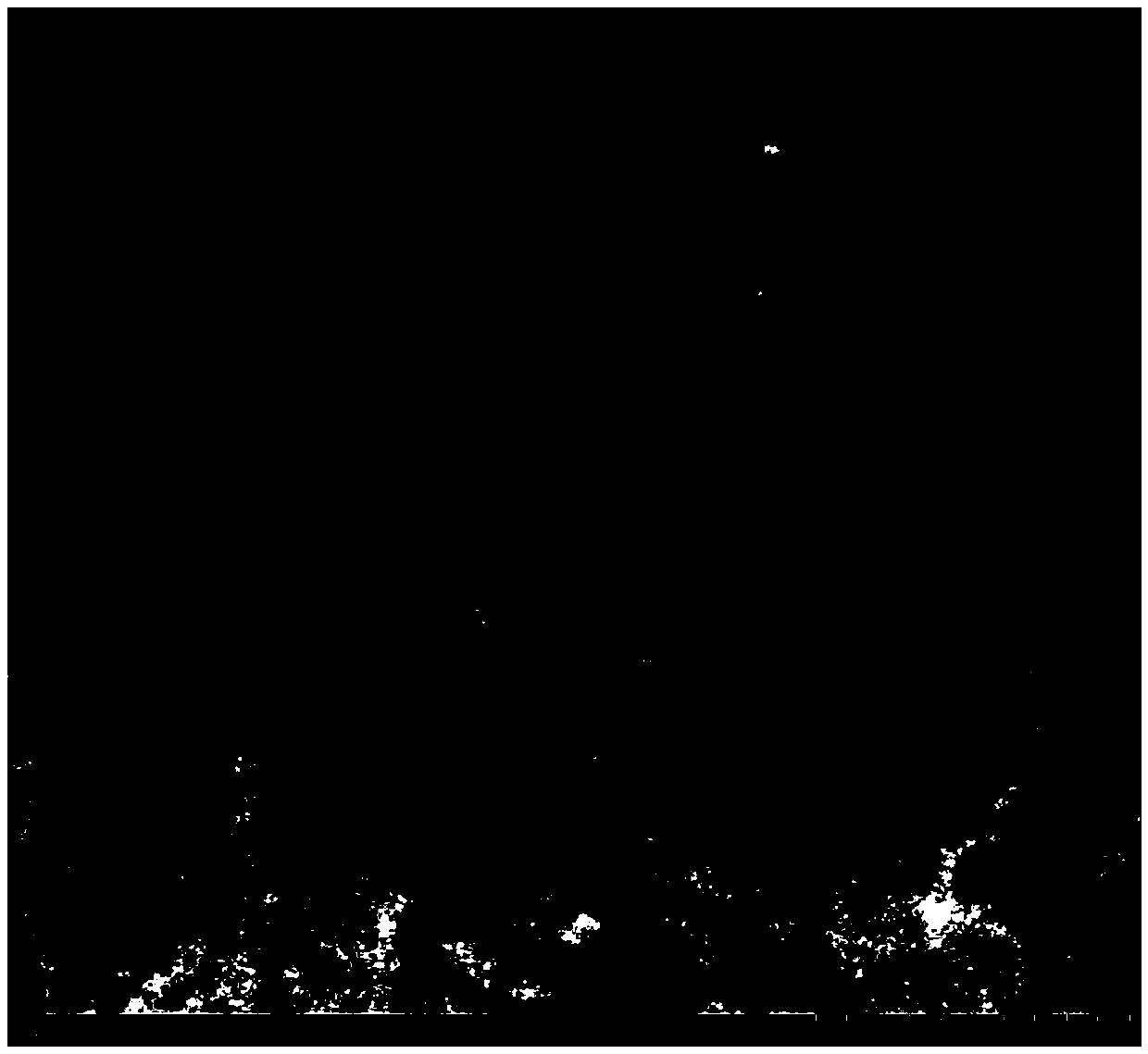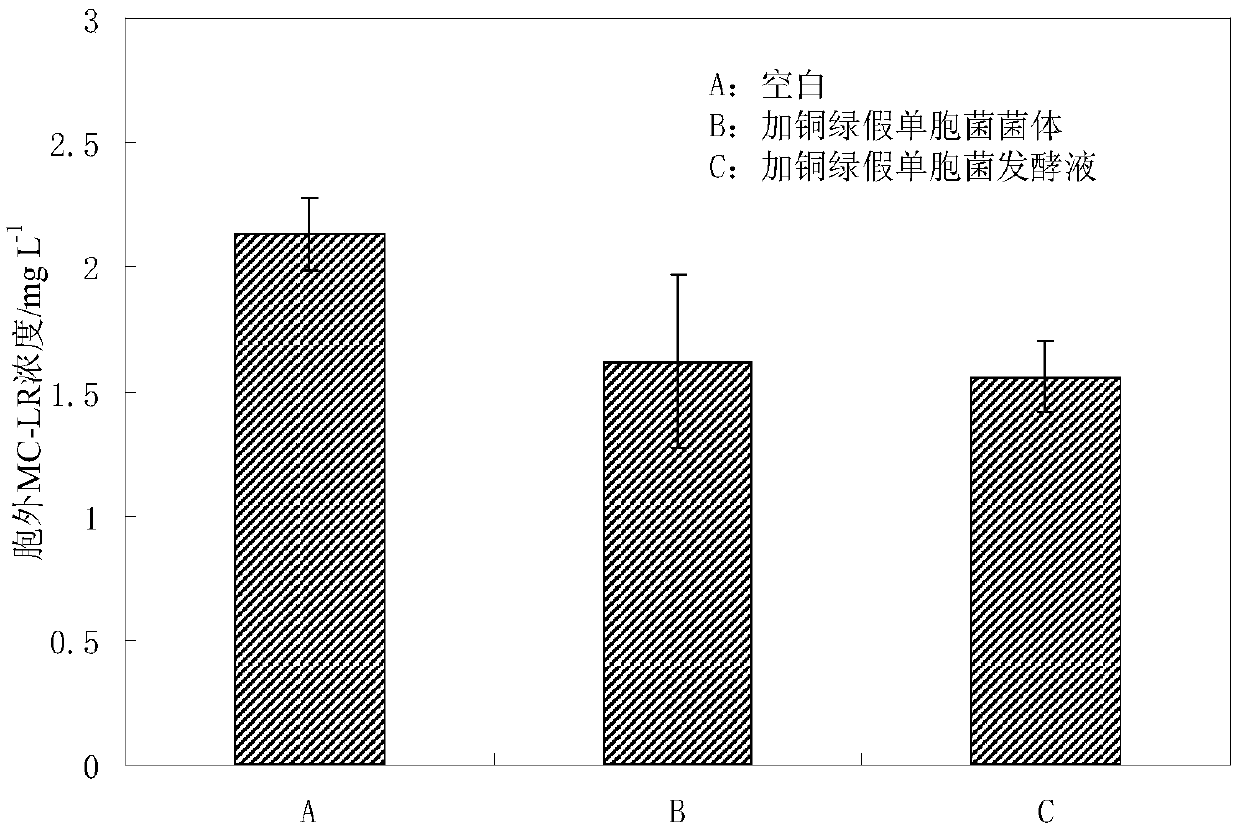Method for synchronously dissolving algae/degrading algal toxins by using microbial combined preparation
A technology of microorganisms and algal toxins, applied in the fields of chemicals for biological control, biocides, botanical equipment and methods, etc., which can solve the problem of fungal degradation of MC-LR, which is rarely studied and does not involve the degradation effect of white rot fungi , single algae removal and other problems, to achieve the effect of low investment, high application value and low cost of raw materials
- Summary
- Abstract
- Description
- Claims
- Application Information
AI Technical Summary
Problems solved by technology
Method used
Image
Examples
Embodiment 1
[0048] Embodiment 1: the preparation of the fermented liquid of Pseudomonas aeruginosa
[0049] (1) After the medium (beef extract 3g; peptone 10g; NaCl 5g; agar powder 15g; distilled water 1000mL; pH 7.2) was sterilized in an autoclave at 121°C for 30min, the aeruginous pseudo-sheets preserved on the slope Bacteria were inoculated into liquid medium for cultivation, the cultivation temperature was 37°C, and the cultivation time was 24h. After cultivation, they were stored in a refrigerator at 4°C for later use;
[0050] (2) After sterilizing the fermentation medium (beef extract 3g; peptone 10g; NaCl 5g; distilled water 1000mL; pH 7.2) in an autoclave at 121°C for 30min, the cultured Pseudomonas aeruginosa mother liquor Inoculate into this liquid fermentation medium by 1% inoculum amount and activate, and the shaker cultivation temperature is 30 ℃, and the shaker rotation speed is 150r / min under the condition of shaker expansion culture respectively 24h, 36h, 48h, 60h, will ...
Embodiment 2
[0051] Embodiment 2: the preparation of the spore liquid of Microporosa haemorrhoids
[0052] Take 400 μL of the spore liquid of Microporosa haemophilus and inoculate it on the plate medium (1000 mL of potato extract (200 g of peeled, cut into pieces and boiled with 1000 mL of water for 30 min), 20 g of glucose, KH 2 PO 4 3g, MgSO 4 ·7H 2 (201.5g, vitamin B10.02g, agar 20g, pH is 6.0) and cultured, the culture temperature is 30 ℃, and the culture time is 48h;
[0053] Use sterile water to wash down the spores of P. hemorrhoids on the plate, filter them through 2 layers of sterilized gauze, and store them in a sterilized empty triangular flask to ensure the OD of the spores of P. hemorrhoids 600 was 0.9, the obtained spore liquid of Microporosa haemorrhoids was stored in a refrigerator at 4°C for later use;
Embodiment 3
[0054] Embodiment 3: Research on the algicidal performance of the fermented liquid of Pseudomonas aeruginosa
[0055] The fermented liquid of Pseudomonas aeruginosa of different fermentation culture time (24h, 36h, 48h, 60h) in embodiment 1 is added to OD by 5% (V / V) 680 In a solution containing Microcystis aeruginosa with a temperature of 0.6 (±0.02), the algae solution was carried out at 25±1°C, the light intensity was 2000lux, and the light:darkness (time ratio) was 14h:10h, and the algae liquid was shaken every day After 3 times of culturing for 1d, 2d, 3d, 4d, 5d, 6d, 7d respectively, the obtained algae solution was centrifuged at 8000r / min for 8min, the supernatant was collected, and the precipitate was washed with PBS (pH7.0) for 3 The second time, the supernatants were combined, and after all the water evaporated, they were bottled with 2 mL of methanol, and the concentration of MC-LR was detected on the machine. Pseudomonas aeruginosa cells without fermentation treat...
PUM
 Login to View More
Login to View More Abstract
Description
Claims
Application Information
 Login to View More
Login to View More - R&D
- Intellectual Property
- Life Sciences
- Materials
- Tech Scout
- Unparalleled Data Quality
- Higher Quality Content
- 60% Fewer Hallucinations
Browse by: Latest US Patents, China's latest patents, Technical Efficacy Thesaurus, Application Domain, Technology Topic, Popular Technical Reports.
© 2025 PatSnap. All rights reserved.Legal|Privacy policy|Modern Slavery Act Transparency Statement|Sitemap|About US| Contact US: help@patsnap.com



